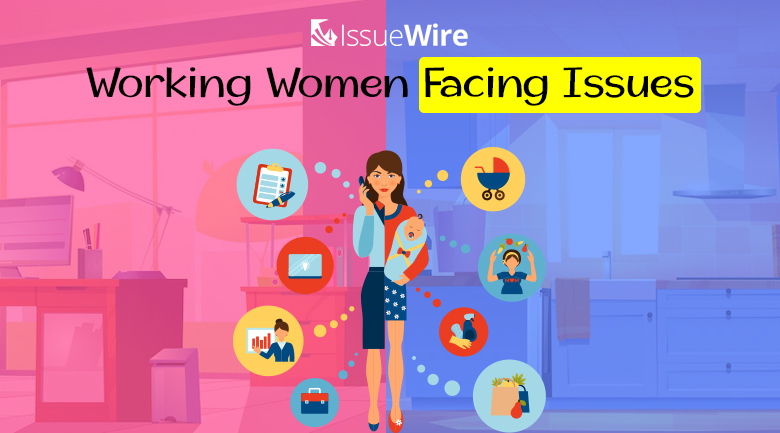More and more women are including themselves in the global workforce alongside men. Though the statistics showcase the percentage of women in the workforce, their contribution, salaries, qualification, and more, they still cannot identify the various issues that women face in their day-to-day Workplace. Women continue to encounter hurdles in their way to achieving their work-related goals.
Here are 5 fundamental issues that today’s working women face trying to progress in their workspace:
1. Work-life balance
Historically women have been the sole bearer of all the work at the home. Since the 1960s, they began to enter the workforce alongside the men. But all the work that is done at home is still regarded as a woman’s job. They are carrying the burden of the workload at both the office and home. This dual responsibility caused an increase in their stress level, damage their physical and emotional health, and lead to lower productivity at work.
2. Equal pay
It's 2022 and women still earn less than men. There is a huge wage gap for women across the world. The biggest challenge in recovering from this is that most people do not even acknowledge it. In the same position, women are paid less than the man in various sectors and organizations, despite having the same level of experience and degrees. According to a survey, in the US, in some industries and workplaces, women have to work over 70 additional days to make the same amount of money as the men did in the same post.
3. Harassment
It is a fact that women tend to face more harassment than men in the workplace. Most of them are sexual harassment cases. At least one-quarter of women have reported that they have faced some type of sexual harassment on their job at some point in their work-life. The women become depressed and even get scared to attend their office when they face such things. In the end, most of them quit altogether to avoid harassment.
4. Career opportunities
Women have lesser job opportunities than men in most places in the world. The main reason behind it is that they don’t have access to the same educational opportunities. It makes them less qualified to take up a position compared to their male counterparts. And even they have the same educational qualifications as men, very few women are offered critical and leadership roles.
5. Children and career
Women are considered the primary caregiver of their offspring in a relationship. So, even they have a full-time job, they still have to take care of their children. Most offices do not have arrangements for mothers to bring their children to the workplace so they can attend to them when they are in need. It gets really hard for women to balance their roles as an employee and mothers in unsupportive workplaces.
- What can be done to improve the situation?
- The workplaces should be more appreciative of the work women put in their workplace and give them the wage they deserve.
- There should be transparency in the pay policy.
- The companies must pay the employees based on their productivity and not gender.
- They should have a proper anti-harassment policy that takes quick action to help women employees.
- Workplaces should have a separate space for working mothers where their children can stay and be closer to their mothers.
Not just workplace, the family members of the working women must also be supportive of them to make their life a little easier. They must help them with the work at home to lessen their pressure at home.








